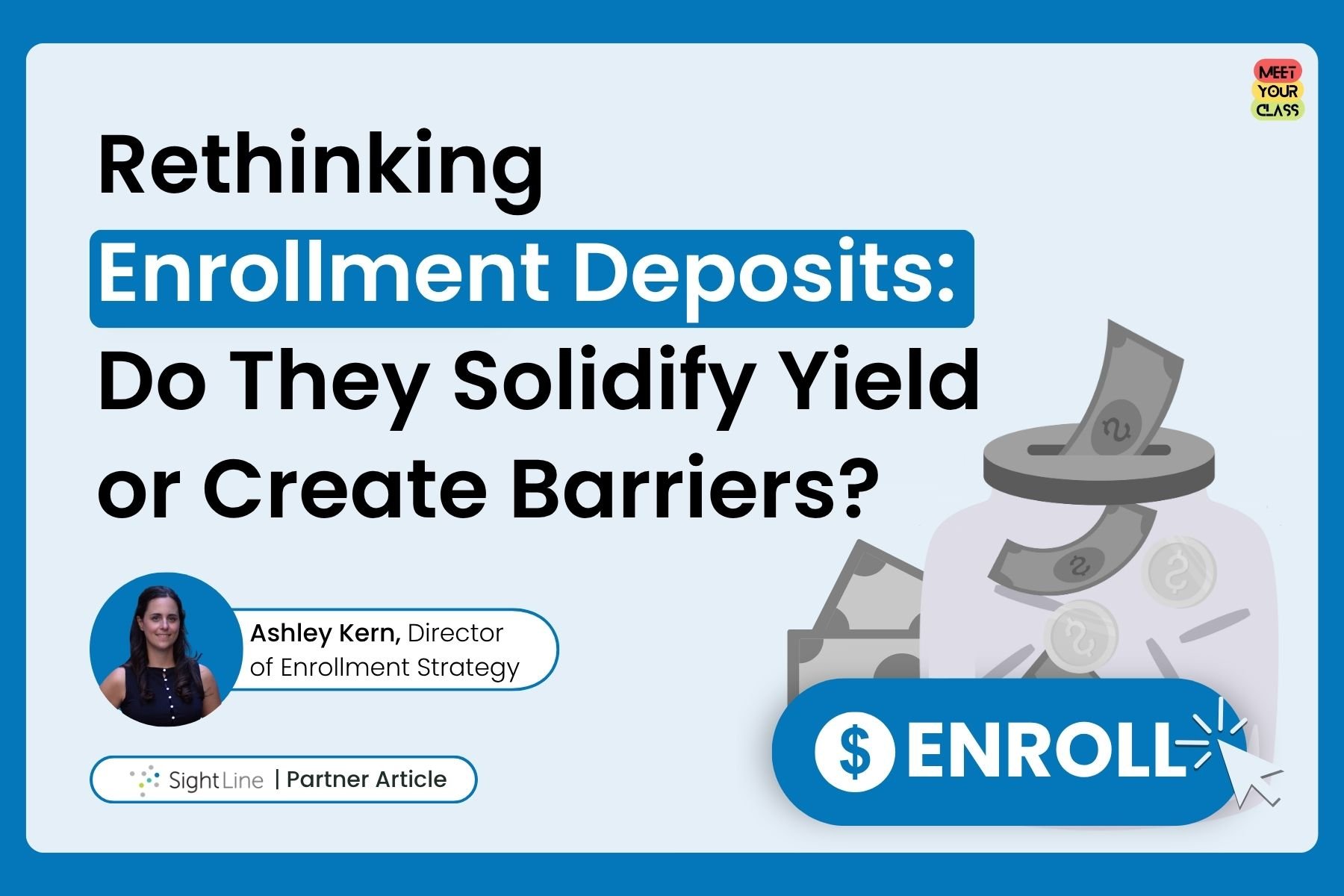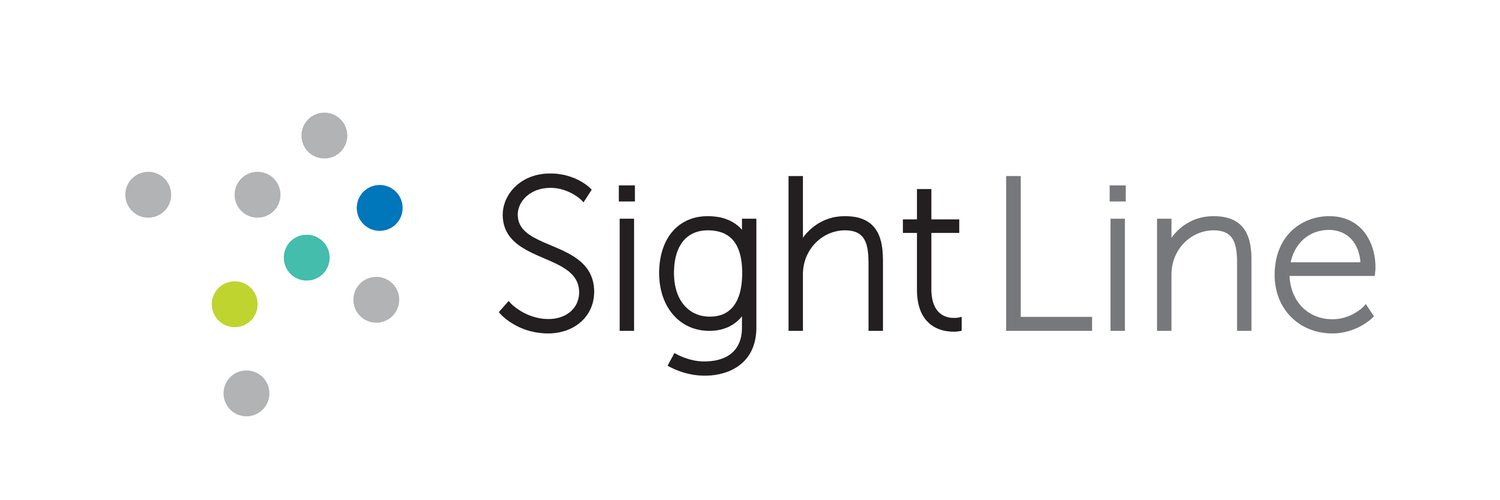
How to Build Affinity and Measure Interest Among Direct Admit Students
Direct admissions programs are reshaping how students access higher education. By removing traditional application barriers, institutions can reach more students and increase overall access. But while direct admissions expands access, it also changes the psychology of interest. Nurturing students through social media and applying social interest data may be the solution.

What We're Getting Wrong in Financial Aid Optimization—How It’s Holding Students Back and Costing Enrollment
The Myth of the Aid Matrix: Many institutions still allocate need-based aid using matrices—grids that assign a target percentage of aid met based on a student’s position in a crosswalk of academic merit and calculated financial need. On paper, this seems fair and efficient. In practice, it’s working against both the enrollment strategy and the students who need support the most.

Rethinking Enrollment Deposits: Do They Solidify Yield or Create Barriers?
As colleges and universities continue to face increasing competition for a shrinking pool of college-bound students, enrollment leaders are reexamining long-held practices to improve yield and reduce summer melt. One area drawing renewed attention: the role of enrollment deposits.
Do required deposits actually lead to stronger commitment and improved yield? Or are they an unnecessary barrier — particularly for students already navigating affordability concerns?

AI Can’t Replace Relationships: How Two Universities Are Getting Personalization Right in Enrollment
In an era where artificial intelligence (AI) is reshaping higher education, two SightLine university partners, Indiana Wesleyan University (IWU) and Longwood University (Longwood), are proving that personal, human-driven engagement remains a key differentiator in student recruitment. Interviews with admissions leaders at these institutions highlight the profound impact of meaningful, one-on-one communication in the enrollment process.

A Smarter Path to Enrollment: 8 Steps to Financial Aid Leveraging
Has financial aid leveraging or optimization always seemed like a black box to you? Institutions are searching for ways to use their aid resources more effectively, enrolling the right students while maintaining financial health and fulfilling their mission. But if you don’t aren’t familiar with the underlying process of financial aid optimization, it can be difficult to know which firms to partner with.

Beyond the Dashboard: Interpretation and Support Are Key in Enrollment Management
In today’s competitive enrollment landscape, most university leaders are not starved for data. From predictive dashboards to weekly cycle reports, enrollment and finance teams are inundated with charts, graphs, and forecasts showing where they stand in the funnel—who’s applied, who’s admitted, who’s deposited. But if you're like many institutions, you know that tracking isn’t the same as strategizing.

Summer Strategies: Using AI & Institutional Change to Prevent Retention Risks
As summer approaches, enrollment and student success teams will be shifting their focus from deposit season to ensuring students—both incoming and continuing—are set up for success. One of the most effective ways to improve retention is by leveraging AI-driven predictive analytics alongside institutional change to identify and address at-risk students before they face challenges that could lead to attrition.

Four Practical Strategies for Delivering Price Transparency in Higher Education
Many college and university leaders that I speak with around enrollment strategy and student recruiting, still say that one of their biggest challenges in enrolling students is around sticker shock. This is particularly true for private institutions with high published prices and high discount rates. Here are four practical ways universities can embrace price transparency to build trust and drive enrollment.

Average Net Price is Declining – Why Optimizing Financial Aid is Critical
In the ever-evolving world of higher education, one of the most pressing concerns for students and families is the cost of earning a degree. Rising tuition rates often dominate headlines and spark debates about affordability. Yet, recent insights from The College Board tell a more nuanced story: despite the increase in published tuition prices, the net price on average has declined in recent years.

Career Services - One of the Most Important Enrollment Drivers
When universities invest in retention, career services, and student employment, they create a cycle of success. Higher retention rates, improved graduation rates, and strong career outcomes all contribute to a positive institutional reputation. This, in turn, attracts new students, improves alumni engagement, and strengthens overall enrollment numbers. This is a particularly important investment for smaller private institutions to be making for the longevity of their institution.

The Impact of Entry Pathways on Student Retention and Achievement
Navigating the transition from high school to college can be challenging, particularly for students with lower academic preparedness. To address this, many institutions offer entry pathways designed to support students as they acclimate to higher education. Our retention analytics team at SightLine worked with a regional 4-year public institution in the Midwest to evaluate how different entry pathways for students may impact their early and long-term success at the institution.

Financial Aid Optimization Analysis Reveals Increased Student Price Sensitivity Year over Year
Each year, SightLine uses student application, financial aid, demographic, and census level data to optimize new scholarship offers for the following enrollment cycle with our university customers. During this process, we compare student enrollment behavior from the most recently completed enrollment cycle to the prior enrollment cycle. Earlier this year we analyzed the fall 2023 enrollment outcomes in comparison to fall 2022 enrollment and most of our findings were consistent across all our customers, indicating changing market conditions.

The Emotional Versus Analytical Decision Process for College Enrollment
In our last article, we talked about the evolving higher ed market. And as a data science company, of course a lot of our perspective on this comes from the data we work with every day. We analyze institutional, IPEDS and the College Scorecard data to understand the changing market. But often times this aggregated data doesn’t capture the full picture. Gasp!

Enrollment Leaders – If You Aren’t Considering Retention, You’re Doing it Wrong
Scholarships play a vital role in attracting talented students to universities, but their impact extends far beyond enrollment numbers and new net student revenue. For universities, considering student retention when optimizing scholarships is not just about ensuring a stable student population; it's about fostering a supportive environment that promotes student success, enhances institutional reputation, and ultimately boosts long-term revenue.

Four Strategies to Combat the Demographic Cliff
The landscape of higher education is evolving rapidly, with universities facing challenges such as the student demographic cliff, declining enrollment, increasing student price sensitivity, and having less information on student caliber with fewer students taking the SAT and ACT. To navigate these challenges successfully, institutions must adopt strategic and data-driven approaches that focus on long-term outcomes and impact. Here are four analytical strategies that we recommend for universities to combat these issues.

The Impact of Tuition Resets
During Fall 2022, enrollment declined by 1.1% compared to Fall 2021 enrollment numbers. This is closer to the pre-pandemic enrollment declines that were expected, although these results were certainly not desired. First year freshman enrollment declined in all four-year sectors ranging from highly selective private institutions to public flagship universities. This continual decline has led more colleges and universities than ever to consider or implement a price freeze or a complete tuition reset.

Preparing for SAI – Adjusting Institutional Aid for New Students
The SightLine team is focused on proactively supporting financially underserved students through the evolving FAFSA requirements. We are keeping a close eye on these changes to help our college and university customers seamlessly make the transition.

8 Key Takeaways: FAFSA Simplification Survey Results
To get a better understanding of what challenges are stemming from the FAFSA Simplification Act, we polled enrollment, financial aid, and budgeting leaders from colleges and universities across the country. The results are in, representing every geographic region, institution type, and size. We see some key trends and challenges emerging.
